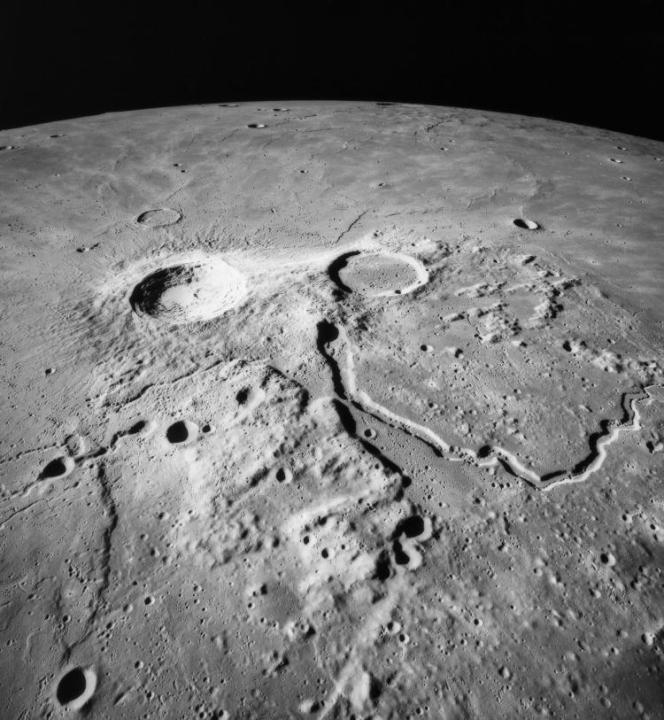If we plan to send humans to the moon for longer stays than a few days, we’ll need to find efficient ways to produce the resources they need to live there. One key resource is water, and finding a convenient source of water on the moon has become a key topic of interest among space agencies in the last few years. The good news is that there does seem to be water ice at the moon’s poles, and there could also be ice deposits in craters near the poles as well. And in 2020 NASA announced a major finding that water had been detected on the moon’s sunlit surface, providing a potentially valuable resource.
Now, researchers from the University of Colorado Boulder have found that there could be thick sheets of ice on the moon, created by ancient volcanoes. Though the moon is volcanically inactive today, it has been very active at earlier periods in its history. The team used computer modeling to simulate the ancient moon and found that this volcanic activity could have thrown out large amounts of water vapor, which then settled on the surface and froze into deposits that could still be there today.

“We envision it as a frost on the moon that built up over time,” explained Andrew Wilcoski, lead author of the new study, in a statement. So there could be stores of ice below the moon’s surface as well as in craters. “It’s possible that 5 or 10 meters below the surface, you have big sheets of ice,” said co-author Paul Hayne.
Some of these same researchers previously found that there could be much more water ice on the moon than generally thought, hidden in tiny patches which stay in permanent darkness and aren’t exposed to sunlight. But they weren’t sure where this ice could have come from. The answer could be the dramatic volcanic eruptions that peaked on the moon between 3 and 4 billion years ago and left marks we still see today, such as valley formations created by lava moving across the surface after being expelled. The volcanoes would have spewed out water vapor and carbon dioxide as well as lava.
This work is based on models, though, so to know if substantial amounts of ice are really present we will have to go and search for it. That’s what NASA is planning to do with its lunar VIPER rover and its challenge to develop technologies for ice drilling on the moon. To detect this resource, Wilcoski said, “We really need to drill down and look for it.”
The research is published in The Planetary Science Journal.



